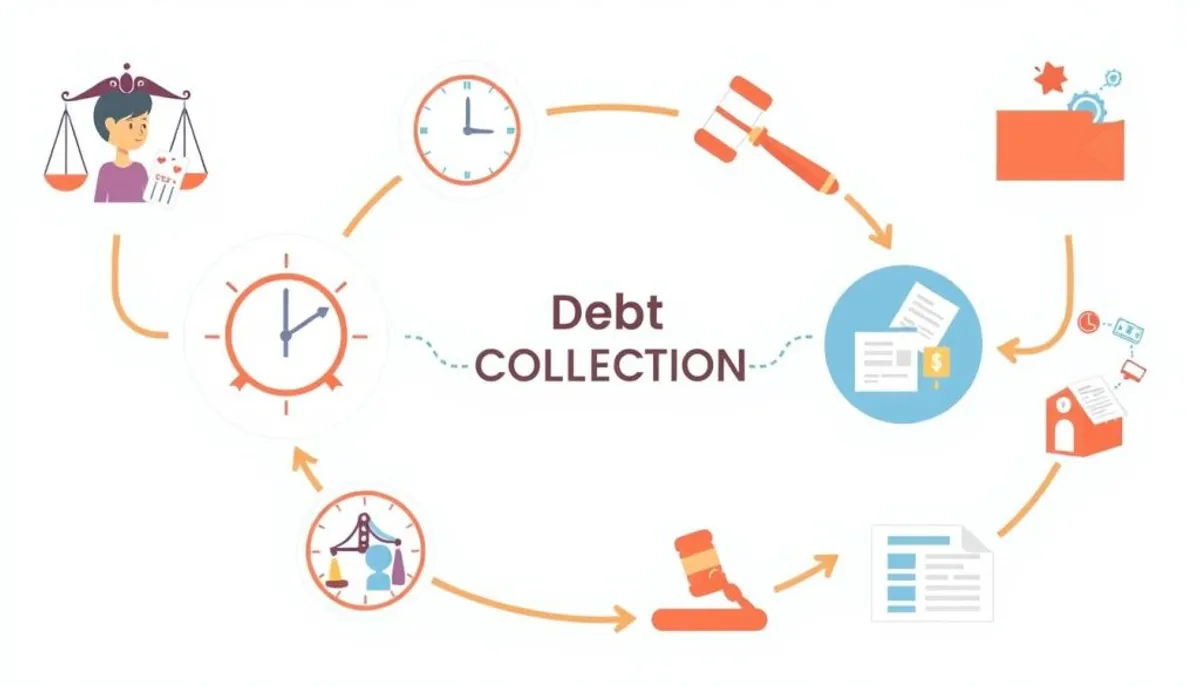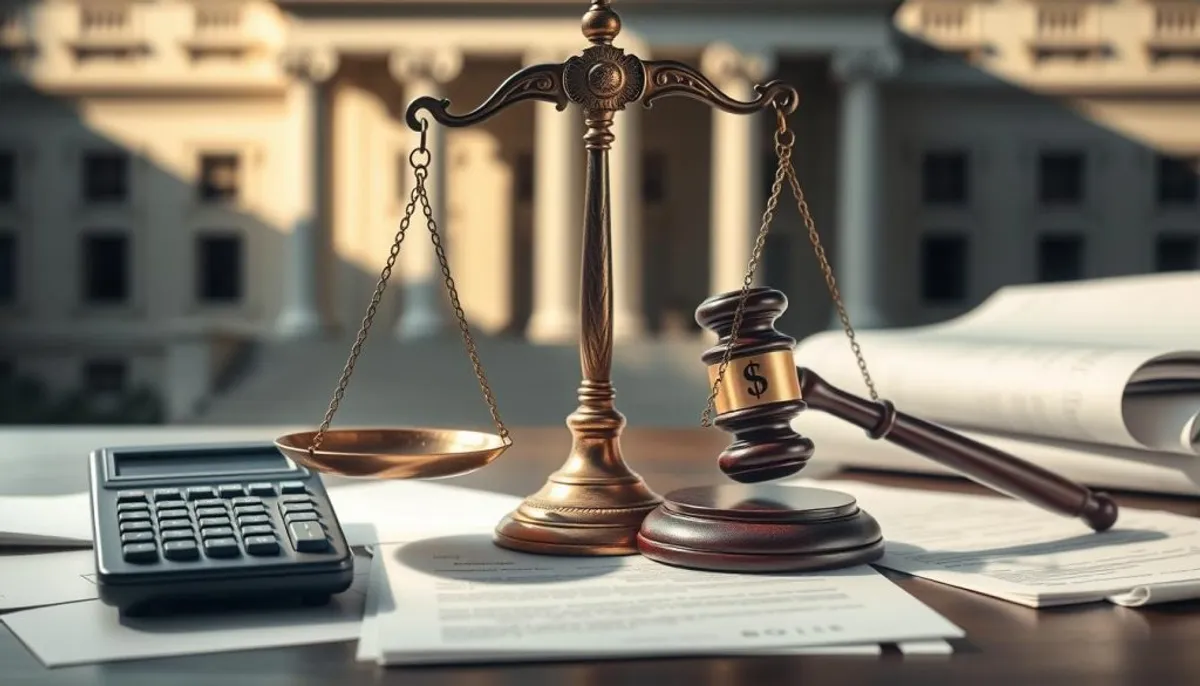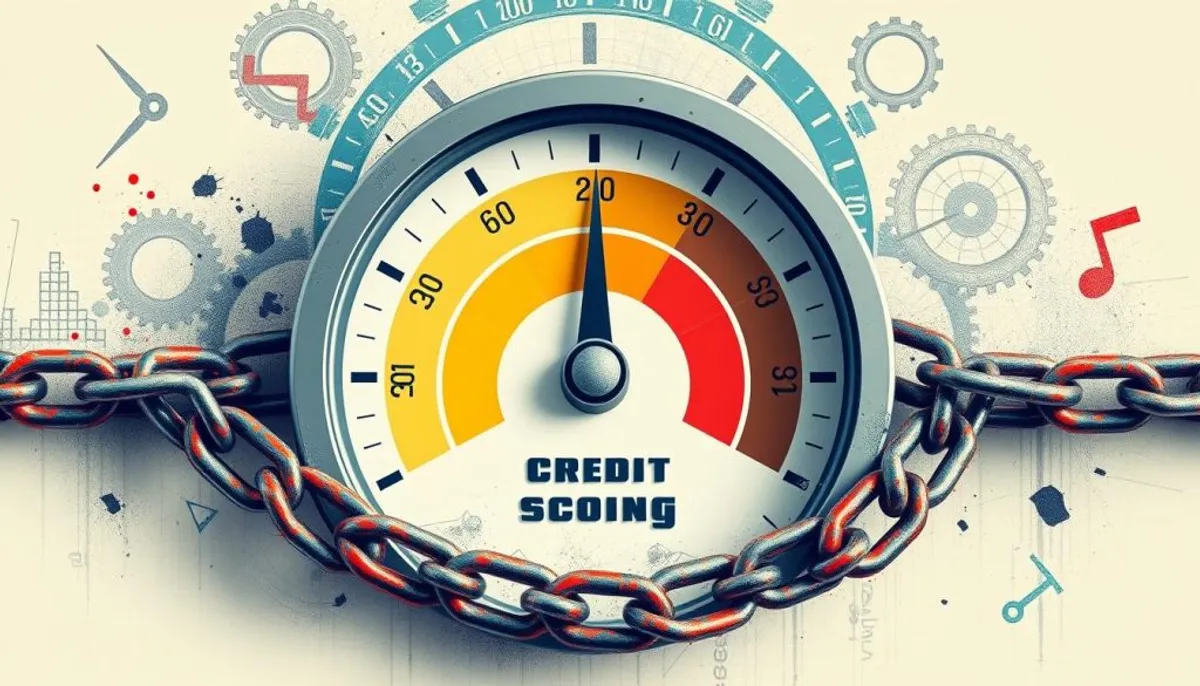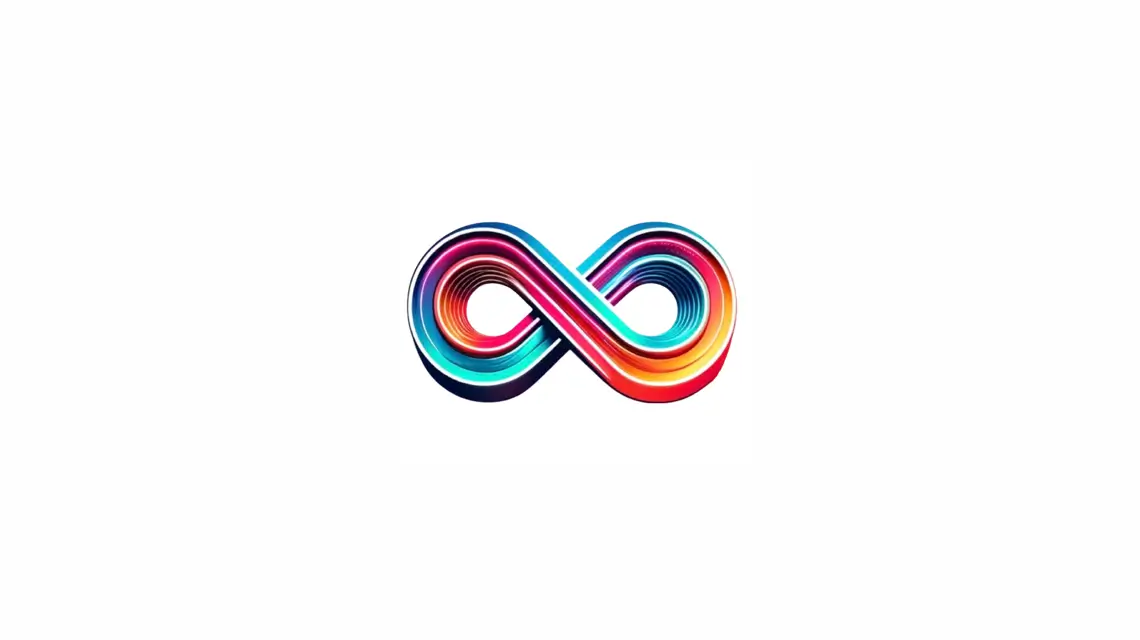Debt collection is a pivotal aspect of the financial sector. It becomes necessary when debts remain unpaid, prompting collection agencies to intervene on behalf of creditors. This guide aims to illuminate the debt collection process, highlighting the mechanisms employed by these agencies and the rights consumers possess.
Collection agencies manage a spectrum of debts, encompassing credit card balances and medical bills. They employ diverse strategies to engage debtors, aiming to establish repayment plans. In extreme cases, they may resort to legal action to reclaim owed funds.

These entities operate on a commission-based model, earning between 25% to 50% of the recovered debt. Some agencies acquire delinquent debts at reduced rates, anticipating profits from full collection.
It is crucial to acknowledge that debt collectors are bound by stringent guidelines. These are mandated by credit reporting agencies and consumer protection statutes. Such regulations are designed to uphold fair practices and safeguard consumer rights throughout the debt recovery process.
Key Takeaways
- Collection agencies recover unpaid debts for businesses and creditors
- They handle various types of debts, including credit card and medical bills
- Agencies typically earn 25% to 50% commission on recovered amounts
- Some agencies purchase delinquent debts at discounted rates
- Debt collectors must follow regulations to protect consumer rights
- The Fair Debt Collection Practices Act sets rules for debt collection practices
- Consumers have legal recourse if debt collectors violate collection rules
Understanding Debt Collection Fundamentals
Debt collection fundamentals are the cornerstone of financial recovery processes. This section explores the essential elements of collection agencies and their critical role in economic stability.
What is a Collection Agency
A collection agency is defined as specialized firms dedicated to recovering delinquent debts. These entities act on behalf of creditors, employing diverse strategies to reclaim overdue accounts. Their tactics include communication with debtors and negotiating repayment plans.
Types of Debts Handled
Collection agencies manage a wide range of debts. These include:
- Credit card balances
- Medical bills
- Personal loans
- Unpaid utility bills
The Role of Collection Agencies in Financial Recovery
Collection agencies are pivotal in financial recovery. They aid businesses in maintaining cash flow by recovering outstanding debts. This involves:
- Contacting debtors through various channels
- Negotiating payment arrangements
- Providing debt verification when requested
- Pursuing legal action as a last resort
| Aspect | Details |
|---|---|
| Statute of Limitations | 3-6 years in most states |
| Credit Report Impact | Up to 7 years from original delinquency |
| FDCPA Restrictions | Prohibits threatening, abusive, or unfair practices |
| Debtor Rights | Dispute debts, request verification, negotiate payment plans |
Grasping these debt collection fundamentals is crucial for both creditors and debtors. It ensures fair practices and fosters effective financial recovery strategies.
How Collection Agency Works: Step-by-Step Process
The debt collection steps represent a systematic approach to reclaiming unpaid debts. When a debt lingers unpaid for 60 days, creditors frequently seek assistance from collection agencies. This step is taken after internal efforts have been exhausted without success.
The collection agency’s process commences with the receipt of delinquent account information. Subsequently, they initiate contact with the debtor, typically within 30 days of the missed payment. This outreach can be through mail or telephone.
Following, the agency verifies the debt’s details and evaluates the debtor’s financial standing. This phase is pivotal in crafting an effective recovery plan. The Fair Debt Collection Practices Act mandates sending a debt validation letter within five days of initial contact.
After verification, negotiations commence. Agencies strive to establish payment plans or settlements with debtors. They may propose flexible repayment schedules to enhance recovery prospects.
Throughout the process, agencies maintain consistent communication with debtors. If needed, they might report the unpaid debt to credit bureaus. As a final measure, legal action could be taken to reclaim the funds.
It’s noteworthy that collection agencies typically receive a commission on recovered amounts. This commission rate varies, influenced by factors such as debt age and balance. Older debts often command higher commission rates due to their increased difficulty in collection.
Different Types of Collection Agencies
Collection agencies are pivotal in the realm of debt recovery. Grasping the nuances of various collection agencies aids both creditors and debtors in navigating the debt collection landscape more adeptly.
First-Party Collection Agencies
First-party collectors operate as internal departments or subsidiaries of the original creditor. They focus on early-stage delinquencies, typically engaging with borrowers 60-90 days past due. Their approach is often more personalized, aiming to preserve the creditor-debtor relationship.
Third-Party Collection Agencies
Third-party collectors, on the other hand, are independent entities contracted by creditors to collect debts after a specified delinquency period. They employ more assertive strategies and can report a “collection” status on a borrower’s credit report. These agencies operate on a contingency basis, earning a percentage of the debt recovered.
Debt Buyers and Their Role
Debt buyers acquire delinquent debts from creditors at reduced rates. They then strive to collect the full debt amount for their own profit. This agency type stands to gain the most from successful debt recovery, as they own the debt outright.
| Type | Relationship to Creditor | Typical Timeframe | Collection Strategy |
|---|---|---|---|
| First-Party Collectors | Internal department | 60-90 days past due | Personalized approach |
| Third-Party Collectors | Independent firm | 90+ days past due | More aggressive tactics |
| Debt Buyers | Purchaser of debt | Any time after default | Full recovery efforts |
Each collection agency type employs a distinct strategy for debt recovery. Recognizing these differences empowers both creditors and debtors to make more informed decisions regarding their financial health.
Legal Framework and Regulations in Debt Collection
Debt collection laws are pivotal in safeguarding consumers from exploitative practices. The Fair Debt Collection Practices Act (FDCPA) serves as the cornerstone, mandating ethical conduct within the industry.
Fair Debt Collection Practices Act (FDCPA)
The FDCPA stipulates rules for debt collectors. They must dispatch a validation notice within five days of their first outreach, outlining the debt’s specifics and the creditor’s identity. Collectors are restricted to contacting debtors between 8 a.m. and 9 p.m., preserving their privacy.

State-Specific Collection Laws
States also enact their own debt collection statutes. For instance, California mandates a four-year statute of limitations for collectors to initiate lawsuits on written agreements. These state-specific laws augment consumer protection in debt collection.
Consumer Protection Guidelines
Consumer protection in debt collection transcends the FDCPA. The Telephone Consumer Protection Act (TCPA) bars non-emergency calls to cell phones without prior consent. Non-compliance can incur substantial penalties, enforced by the FCC and state attorneys general.
| Regulation | Key Provision |
|---|---|
| FDCPA | Prohibits abusive practices, sets communication guidelines |
| State Laws | Vary by state, often provide additional protections |
| TCPA | Regulates calls to cell phones, includes text messages |
| CFPB Rules | Proposes detailed initial notices, dispute resolution process |
Collection Agency Fees and Commission Structures
Collection agency fees and debt collection commissions are pivotal in the cost of debt recovery. Agencies operate on a commission-based model, earning a percentage of the debt they successfully recover. This structure motivates collectors to aggressively pursue outstanding balances.
Commission rates for debt collection vary widely. Most agencies charge between 10% and 50% of the recovered amount. The age of the debt, the difficulty of recovery, and the agency’s specific services influence these rates.
Some collection agencies choose to purchase debts outright from creditors at discounted rates. This strategy allows them to pursue full payment and potentially earn higher profits. Yet, it also increases their financial risk if they fail to recover the debt.
| Commission Type | Description | Typical Range |
|---|---|---|
| Standard Commission | Percentage of recovered debt | 10% – 50% |
| Tiered Commission | Rates increase with higher recovery amounts | 15% – 40% |
| Flat Fee | Fixed rate per account, regardless of recovery | $10 – $50 per account |
Collector salaries can vary significantly. The median annual salary for bill collectors was $35,350 in 2016. Yet, top performers in the industry can earn substantial incomes. Some collectors have reported monthly bonuses exceeding $10,000, showcasing the potential for high earnings in this field.
Debt Collection Strategies and Techniques
Effective debt collection strategies are crucial for financial recovery. With Americans owing $178 billion in debt as of Q1 2022, a 24% increase from the previous year, mastering these techniques is more important than ever.
Communication Methods
Clear communication is the cornerstone of successful debt recovery. Collectors employ a variety of methods, including phone calls, emails, and letters, to connect with debtors. Early intervention is paramount, addressing financial issues before they worsen. This proactive approach enhances the likelihood of repayment and boosts customer satisfaction.
Negotiation Tactics
Negotiation techniques are pivotal in debt collection. Collectors aim to comprehend the debtor’s financial circumstances to forge solutions that benefit both parties. Offering incentives, such as reduced interest rates, can motivate timely repayment. It is essential to strike a balance between assertiveness and empathy in negotiations.
Payment Plan Options
Flexible payment plan arrangements are vital for effective debt recovery. Options include:
- Lump sum settlements
- Installment plans
- Debt settlements for less than the full amount
These alternatives empower customers to manage their debt effectively, increasing the likelihood of repayment. Professional debt collection strategies, like those offered by industry leaders, can significantly enhance lenders’ profitability while preserving strong client relationships.
| Strategy | Benefit |
|---|---|
| Early intervention | Addresses issues before escalation |
| Flexible payment options | Improves debt management |
| Clear communication | Enhances understanding of repayment options |
| Professional collection services | Increases recovery rates |
Rights and Protections for Debtors
Debtors are afforded specific rights and protections under the law. These measures aim to ensure fair treatment during debt collection processes. Key aspects include the statute of limitations on debt and dispute resolution in debt collection.
Statute of Limitations
The statute of limitations on debt varies by state, typically ranging from 3 to 5 years. After this period, collectors are barred from suing for the debt. It is imperative to familiarize yourself with your state’s laws to safeguard your interests.
Dispute Resolution Process
Debtors can dispute a debt and request verification. The Fair Debt Collection Practices Act (FDCPA) delineates this process. You have 30 days to dispute a debt after receiving validation information. During this period, collection efforts must cease until verification is provided.
Legal Recourse Options
If a collector violates the FDCPA, debtors can take legal action. You can file complaints with regulatory agencies or pursue legal action. Potential damages can reach up to $1,000 plus attorney fees.
| Debtor Right | Description |
|---|---|
| Debt Validation | Request proof of debt within 30 days |
| Cease Communication | Ask collectors to stop contacting you |
| Sue for Violations | Take legal action for FDCPA breaches |
Understanding your rights as a debtor is crucial. It ensures fair treatment and protects you from unfair practices. Always stay informed about your local laws and seek legal advice when needed.
The Impact of Collections on Credit Scores
Collections and credit scores are intricately connected, with the consequences of debt collection profoundly influencing your financial well-being. When a debt transitions to collections, it etches a permanent mark on your credit report. This can severely hinder your capacity to obtain loans or secure employment.
Collection accounts can persist on your credit report for up to seven years from the initial missed payment. This extended presence can be devastating, notably for individuals with previously pristine credit scores.

- Debt amount: Some credit scoring models ignore collections under $100
- Debt type: Medical bills may be treated differently than credit card debt
- Payment status: Paid collections may have less impact than unpaid ones
Recent adjustments in credit reporting have introduced some respite. For example, paid medical collection debt and medical collections under $500 are now excluded from FICO Score calculations. Newer FICO models also disregard paid collections entirely.
| Credit Scoring Model | Treatment of Collections |
|---|---|
| FICO Score 8 | Ignores collections under $100 |
| FICO Score 9 | Ignores paid collections, reduces impact of medical debt |
| FICO Score 10 Suite | Ignores paid collections, reduces impact of medical debt |
To mitigate the credit report impact of collections, addressing debts promptly is essential. Consider negotiating with collectors for more favorable reporting terms. While the effects of collections are significant, they are not irreversible. Proactive measures can help enhance your credit score over time.
ti3: A Modern Alternative to Traditional Collection Agencies
In today’s fast-paced business world, efficiently managing overdue accounts is essential. ti3 stands out as a revolutionary force in automated debt collection. It introduces a novel method to payment recovery, establishing a new benchmark for modern collection solutions.
Automated Payment Recovery
ti3’s automated system revolutionizes the debt collection process. It sends timely reminders, escalates issues when necessary, and simplifies payment collection. This method has yielded remarkable outcomes, with businesses witnessing a 60% reduction in invoice processing time and a 40% decrease in processing costs.
Client Relationship Management in Collections
ti3 diverges from traditional methods by emphasizing positive customer interactions. Its client relationship management tools enable businesses to maintain a good rapport with customers while pursuing payments. This approach is vital, as 89% of small-to-medium-sized businesses report late payments hinder their growth.
Cost-Effective Solutions
ti3 presents a cost-effective alternative to traditional collection agencies. By eliminating the need for third-party collectors, businesses can save substantially. Studies indicate that small businesses spend about $5,000 annually on late payment recovery. With ti3, companies can cut these costs while enhancing recovery rates.
The platform integrates seamlessly with popular invoicing systems like QuickBooks and Oracle NetSuite, catering to businesses of all sizes. By embracing ti3’s modern collection solutions, companies can concentrate on growth rather than payment collection. This addresses the needs of the 65% of businesses that dedicate 14 hours weekly to payment collection tasks.
Best Practices for Choosing a Collection Agency
Selecting collection agencies necessitates a meticulous evaluation of several critical factors. This guide aims to facilitate your journey in identifying the most suitable agency for your enterprise’s requirements.
Licensing and Certifications
When scrutinizing debt collector credentials, prioritize agencies regulated by the Financial Conduct Authority (FCA). It is imperative to verify GDPR registration and the presence of robust privacy policies. Agencies should also possess adequate third-party liability and professional indemnity insurance.
Industry Experience
Assess the agency’s tenure in the debt collection sector. Agencies with several years of experience are generally more adept. Seek those with a track record of working with prominent clients in your industry. Such experience often equates to a deeper understanding of sector-specific hurdles.
Success Rate Evaluation
Success rates among agencies exhibit considerable variability. Agencies like Summit Account Resolution achieve a 34.8% debt recovery rate, with potential rates reaching up to 80% in certain scenarios. PSI reports a 38% recovery rate, exceeding the industry norm of 20-25%.
| Agency | Recovery Rate | Experience |
|---|---|---|
| Summit AR | 34.8% – 80% | Varies |
| PSI | 38% | Varies |
| Rocket Receivable | 4x industry average | >60,000 clients served |
| IC System | Not specified | 80+ years |
Opt for agencies with transparent fee structures, commonly operating on a commission basis. Assess their communication practices and commitment to ethical collection methods. By examining these elements, you will be better positioned to select an effective collection agency for your business.
Technology in Modern Debt Collection
Debt collection technology has transformed the industry, enhancing efficiency and effectiveness. Automated systems now dominate, streamlining operations and boosting recovery rates. These digital tools have revolutionized communication with debtors and workflow management.
The introduction of automated payment reminders has significantly increased debt recovery. By keeping overdue accounts prominent, agencies have seen faster settlements. Digital methods, including email, SMS, and online portals, have streamlined communication, making it simpler for debtors to meet their obligations.
Advanced analytics tools offer real-time insights into collection performance. This enables agencies to swiftly adjust their strategies, enhancing outcomes. The integration of debt collection software with property management systems has minimized manual errors, providing immediate updates on collection progress.
- 11% of third-party collectors were already using AI/ML technologies in 2023
- 60% of third-party collectors were planning to implement AI/ML technologies
- AI can help predict customer behavior more accurately using dynamic risk segmentation
- AI can personalize payment plans based on individuals’ needs
The future of debt collection hinges on embracing these technological advancements. As agencies continue to adopt AI, machine learning, and automation, they can anticipate enhanced efficiency, compliance, and customer satisfaction in their debt recovery endeavors.
Conclusion
The debt collection industry is vital for maintaining financial stability in businesses. Our overview shows that over 75% of collection agencies have fewer than 20 employees. Yet, larger firms with 100+ staff generate about two-thirds of the industry’s revenue. This diversity highlights the sector’s complexity.
Collection agencies offer significant benefits. They work on a contingency basis, meaning clients only pay for successful recoveries. This cost-effective approach, combined with advanced tools and strategies, leads to higher debt recovery rates. Outsourcing to these agencies allows businesses to focus on core activities and maintain healthy cash flow.
Looking ahead, technology is transforming the debt recovery landscape. Modern solutions like ti3 offer automated, efficient alternatives to traditional methods. As the industry evolves, it’s focusing on compliance, efficiency, and positive client relationships. For both businesses and individuals navigating financial obligations, understanding the debt collection process and consumer rights is more important than ever.
RelatedRelated articles



